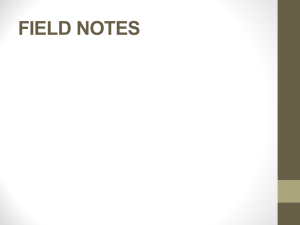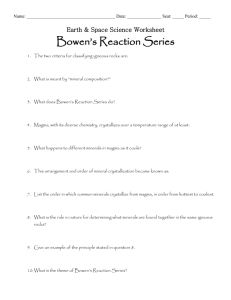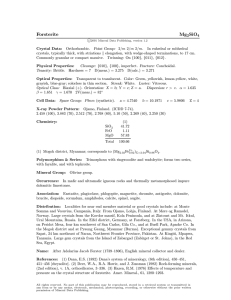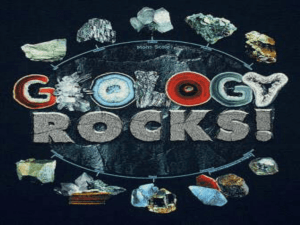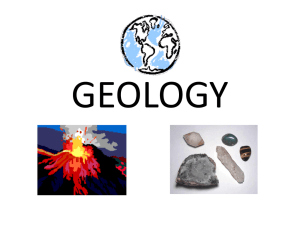ESS Final Review Sheet 2013 Name: What is a mineral? How do
advertisement
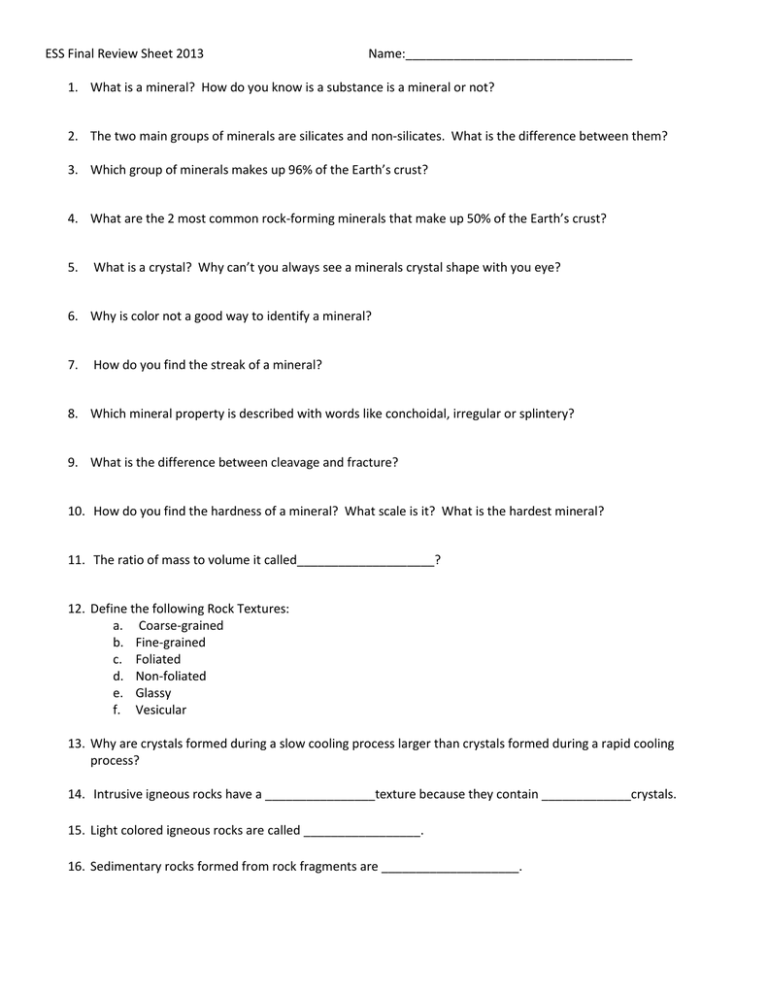
ESS Final Review Sheet 2013 Name:_________________________________ 1. What is a mineral? How do you know is a substance is a mineral or not? 2. The two main groups of minerals are silicates and non-silicates. What is the difference between them? 3. Which group of minerals makes up 96% of the Earth’s crust? 4. What are the 2 most common rock-forming minerals that make up 50% of the Earth’s crust? 5. What is a crystal? Why can’t you always see a minerals crystal shape with you eye? 6. Why is color not a good way to identify a mineral? 7. How do you find the streak of a mineral? 8. Which mineral property is described with words like conchoidal, irregular or splintery? 9. What is the difference between cleavage and fracture? 10. How do you find the hardness of a mineral? What scale is it? What is the hardest mineral? 11. The ratio of mass to volume it called____________________? 12. Define the following Rock Textures: a. Coarse-grained b. Fine-grained c. Foliated d. Non-foliated e. Glassy f. Vesicular 13. Why are crystals formed during a slow cooling process larger than crystals formed during a rapid cooling process? 14. Intrusive igneous rocks have a ________________texture because they contain _____________crystals. 15. Light colored igneous rocks are called _________________. 16. Sedimentary rocks formed from rock fragments are ____________________. ESS Final Review Sheet 2013 Name:_________________________________ Graph: 1. Plot a substance that contains 65% silicon, 25% oxygen, 10% other elements and label it A 2. Plot a substance that contains 30% silicon, 65% oxygen, 5% other elements and label it B 3. Plot a substance that contains 50% silicon, 15% oxygen, 35% other elements and label it C Extra Credit (5pts) Think about the rock cycle pictured below. Explain how igneous, metamorphic and sedimentary rocks form. Which type of rocks were the first rocks on Earth?
